(Editor’s note: This article was written by Brian Miller, co-chair of the Devin Registry.)
A man and his son circle the little red sports car inquisitively, the elder man scratching his chin while the younger lifts his sunglasses to read the name on the badge.
“What is it?” asks the college-age boy.
The owner steps over to to answer their questions and to show them the unique features of the automobile. This scene is replayed over and over throughout the weekend, but the owner is always quick to answer questions and enthusiastic to talk about the man behind the car.
The man is Bill Devin, and eight of his cars were gathered together this summer in a special tribute at The Quail, A Motorsports Gathering during Monterey Car Week.
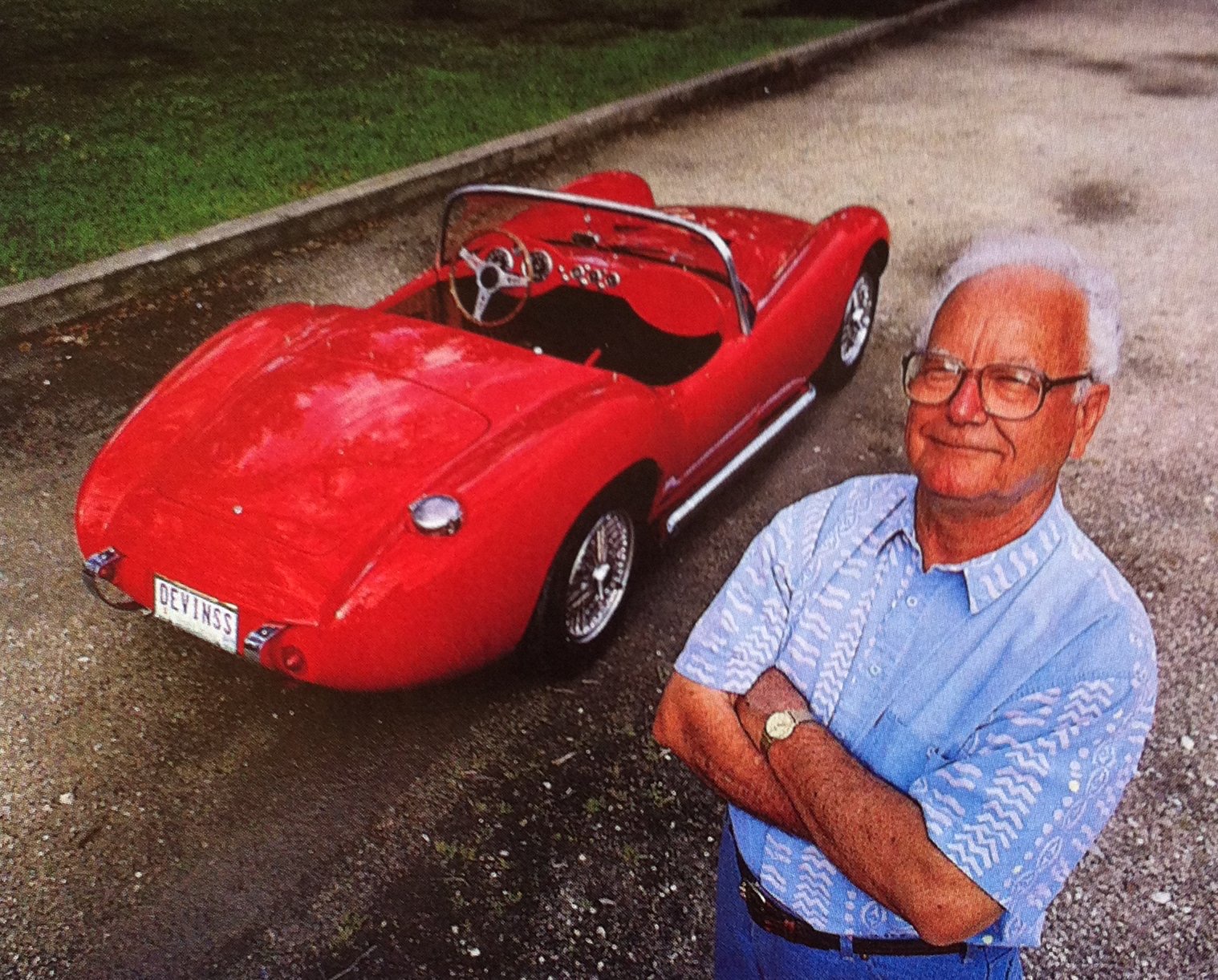
Like many men who returned from World War II, Bill Devin was interested in sports cars and racing. He ran a few car dealerships in the Midwest and then in California, so he had access to cars and parts as well as an introduction to the race tracks and racing drivers of the day. His background as a mechanic gave him insight into the machines he raced and he was often working on ways of improving them.
Devin’s first taste of racing success came in 1951 behind the wheel of a Crosley Hotshot. He entered an SCCA race at Buchanan Field in Northern California and won the novice group and placed fifth overall. He also campaigned the 750cc Crosley in 1952 and proved competitive against larger-displacement cars from Europe driven by the likes of John von Neumann and Ken Miles.
Devin graduated to racing Ferraris, including the ex-Phil Hill Ferrari 212 he purchased from Luigi Chinetti and in which he finished third at Palm Springs in 1953. Devin planned a run at the 24 Hours of Le Mans in a new Ferrari coupe, but when he arrived in Italy to get his car, he discovered it was still in the assembly process.
He owned and raced several Ferraris, including a 250 MM. Like many race drivers of the day, Devin sold his car at the end of the racing season. But as fate would have it, part of the deal included a small DB-Panhard sports car as partial trade. It was the little DB-Panhard would set Devin on the path to building his own cars.
Unhappy with the DB-Panhard’s performance, Devin modified the horizontally opposed twin cylinder power plant with overhead cam heads from a Norton motorcycle, driving the cams via a toothed rubber belt. Many auto enthusiast consider this to be the first belt-driven overhead cam engine.
Devin’s modifications boosted the output from 40 horsepower to 80. Devin housed the engine in a chassis of his own construction clothed with a lightweight fiberglass recreation of the DB-Panhard bodywork. He would build about a dozen of these Devin-Panhard specials, with one of them winning the SCCA national championship in the H modified class in 1956.
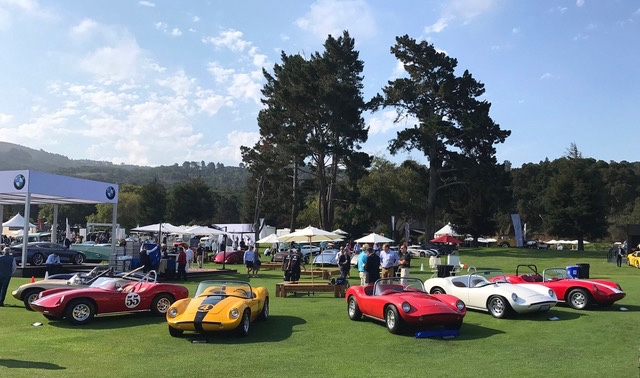
By that time, Devin had launched his fiberglass body business, Devin Enterprises, which produced a Monza-style body in a variety of sizes to fit the chassis of cars from MG, Triumph, VW, Fiat, Healy, Porsche, and others. This body was advertised widely at a price of $295 and many collectors today refer to them as Devin “295” bodies.
Devin would also make bodies available to racers who would create some of the most famous Devin Specials of the period, including Dean Moon’s Moonbeam Special, The Echidnas, and the Pikes Peak-winning Ak Miller Special. While Devin had become a respected leader in the booming fiberglass body business, the success of the Devin-Panhard got him thinking again about building his own complete cars.
Devin was contacted by an Irish chassis builder, Malcolm MacGregor, who had built a sports car chassis in need of a body. The two concocted a plan — MacGregor would construct the rolling chassis and ship them to the U.S., where Devin Enterprises would complete the car. Devin went to work designing a new, larger, more voluptuous body for the car to be dubbed the Devin SS.
The first such car was finished in 1958 and featured rack-and-pinion steering, Girling disc brakes front and rear (inboard on the rear), and a DeDion type rear suspension. Power came from a Devin-modified Chevrolet Corvette V8 engine placed well behind the front axle and sending power through the Corvette 4-speed transmission to the Salisbury style rear end. Weighing in at almost 1,000 pounds less than a contemporary Corvette, but with the same or more horsepower, the Devin SS was a lively performer on road and track.
Devin’s SS accumulated class victories and podium finishes. Perhaps the only problem with the car was its price. All that cutting-edge chassis and suspension technology along with the handcrafted assembly meant a Devin SS cost nearly as much as a Mercedes-Benz 300 SL. The car was fast but sales were slow, forcing Devin to consider a lower cost sports car.
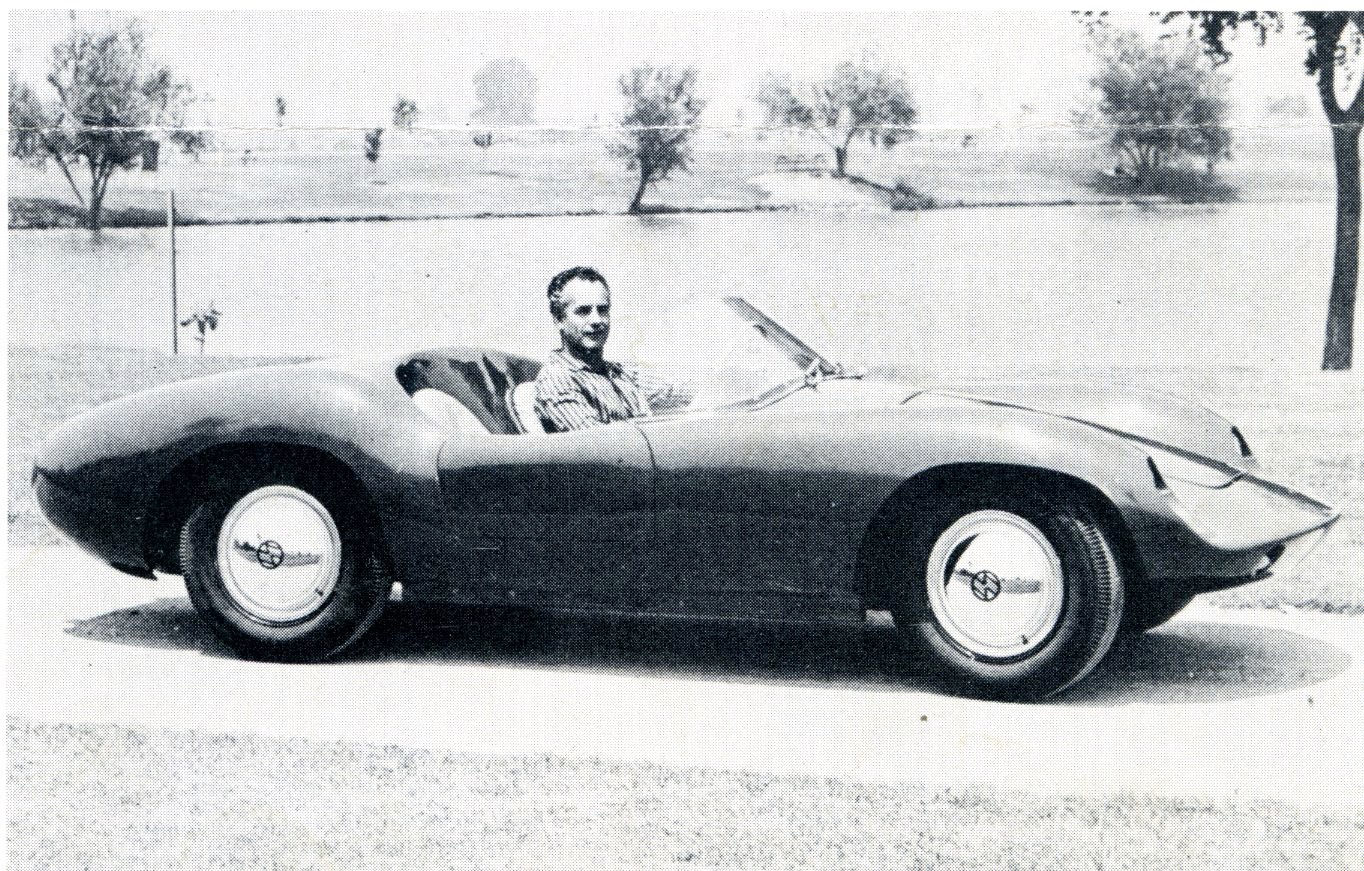
Devin went back to his roots with a smaller displacement car, this time favoring Porsche’s horizontally opposed four cylinder engine and transaxle. He designed a new tubular-frame chassis with a shorter wheelbase than the SS that would allow him to utilize VW/Porsche components for front and rear suspension with Devin’s own custom coil over springs and shocks at the rear. This new chassis would allow the use of Porsche drivetrain for racing or VW components for the more budget minded.
The cockpit and rear body section of the Devin SS could be used, though he designed a new front end for the shorter wheelbase car. With no need for a radiator opening, Devin penned a radical shark-nose design that looked low and sleek yet allowed for a large front trunk. The resulting car was named the Devin D (for Deutschland due to the German components) and Devin was able to offer the car for sale with Porsche power for just under one-third the price of the Devin SS, even less for a VW engined version.
With Devin Enterprises already selling and shipping fiberglass bodies all over the globe, it made sense for them to offer a component version of Devin D as well. Unlike many so-called kit cars, where the builder had to engineer much of the car themselves, Devin competent cars arrived with the body already bonded to the chassis and almost everything but the drivetrain, wheels, and tires pre-installed.
In 1959, Devin was unable to acquire any new Porsche engines. It might be an old racer’s tale but supposedly the Porsche-powered Devin D sports cars were beating Porsche’s own cars at some races. The legend goes that Porsche higher ups put the word out that any Porsche dealer selling engines to Devin Enterprises would lose their dealerships.
Devin finally had a lightweight, inexpensive, and race-winning car to sell but his engine supply has dried up, and while the VW-engined versions might satisfy the street car crowd, they were not going to keep his racing customers happy. Devin was going to have to find a solution and fast.
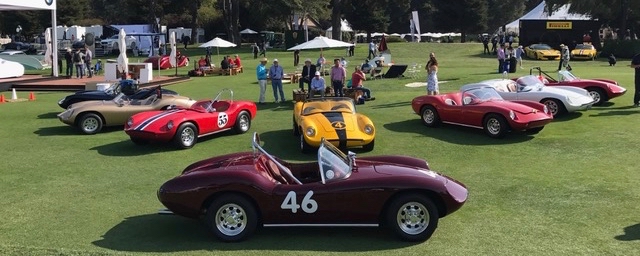
Chevrolet was aware of VW and Porsche’s rising popularity and had been working on its own air-cooled, rear-engined car. Unlike the Germans, Chevrolet decided to build its car, the Corvair, with six instead of four cylinders for its engine.Devin reworked the Devin D chassis to accept a modified version of Chevrolet’s Corvair powertrain and rear suspension. The result was the Devin C (for Corvair), a car Devin termed his “All American Sports Car.”
The prototype featured Girling disc brakes as used on the Devin SS but the remaining cars constructed by Devin Enterprises used drum brakes sourced from the Corvair to keep the price in check. Only a few hundred pounds heavier than the Devin D, with more than double the horsepower, the Devin C proved to be one fast and nimble little sports car. The Chevy-powered Devin C upheld Devin’s honor on road and track as well as motorsports events such as hillclimbs and slalom racing. Devin Enterprises offered the Devin C as a complete car and also as a component version.
Devin continued to refine the Devin C. At the 1964 New York Auto Show, Devin Enterprises unveiled the Devin GT prototype, a sleek aerodynamic coupe based on the Devin C chassis and drivetrain, but with a luxurious cabin and a futuristic look. While orders were placed for an initial 50 cars, Devin Enterprises did not have enough income at the time to start production. The lack of funding, along with looming auto industry safety and emissions regulations and a slow-down in the sales of small sports cars in favor of larger pony cars and muscle cars, meant Bill Devin would never be able to put his grand touring prototype coupe into production. Devin Enterprises would close its doors later that year.
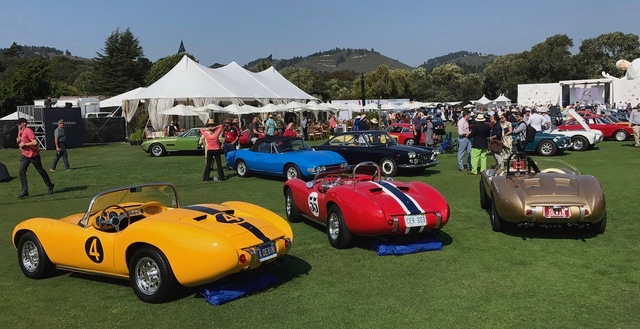
Decades later, as the vintage racing hobby took off, Devin cars enjoyed a resurgence. Drivers of Devin’s SS, D, and C models discovered Bill Devin had a cache of original parts stashed away and they were able to repair race damage and bring their cars back to life. Parts Devin didn’t have, he was able to make or have made from his original drawings and jigs.
For many years Bill Devin would travel to vintage races to watch a new generation of drivers race, and win, in his cars. In tribute to his impact on the sport, his 75th birthday party was attended by such notables as Phil Hill, Jon Von-Neumann, Zora Argus-Duntov, VasekPolak, Carroll, Shelby, and Dan Gurney.
Bill Devin died on December 1st, 2000. His legacy lives on in the cars he raced and the cars he built. This legacy iss upheld at vintage races, and at The Quail, where eight of the original 25 Devin C sports cars were on display.
What’s it like to drive a Devin?



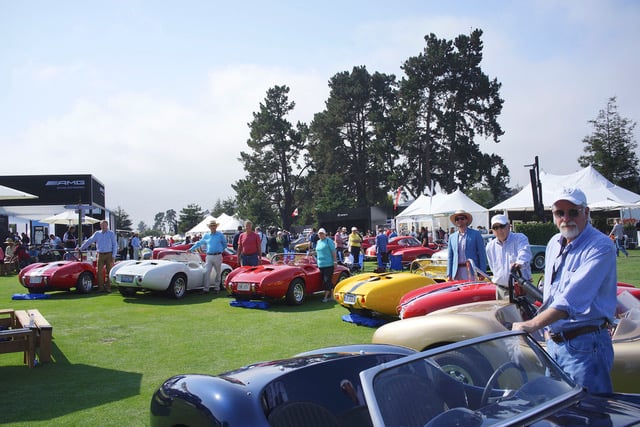
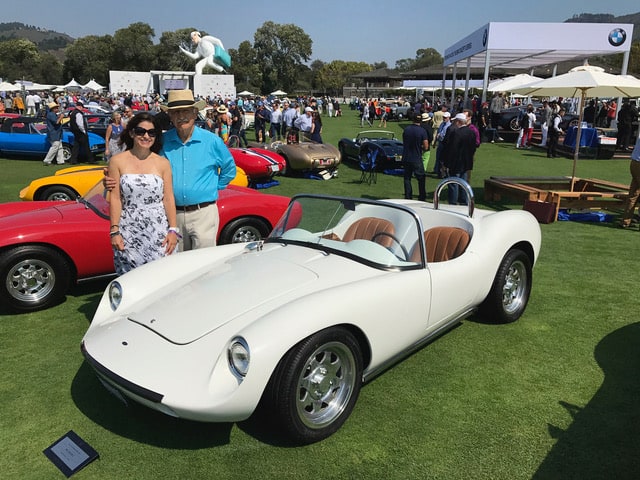
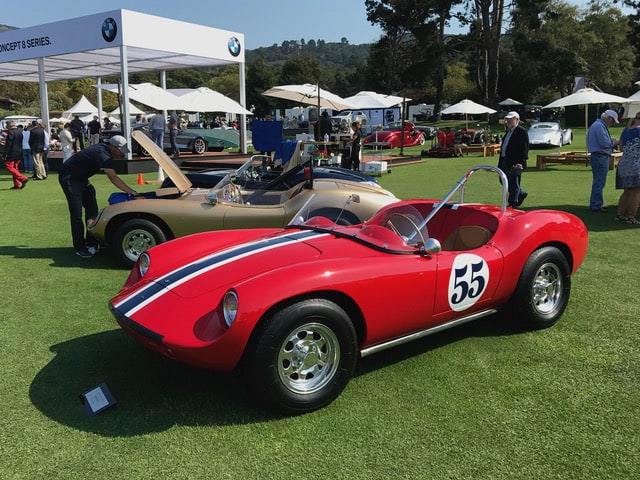
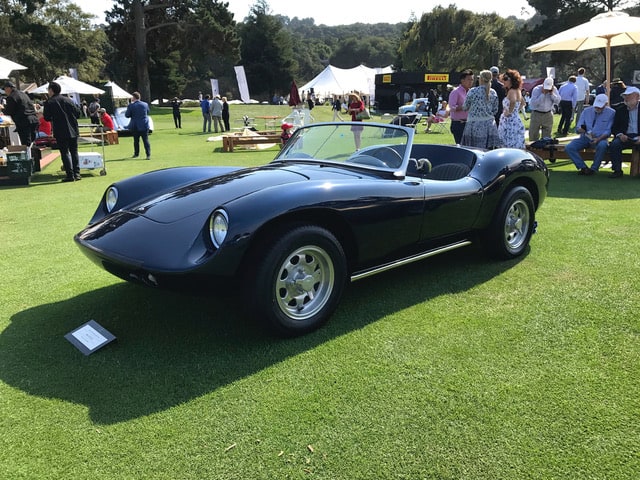
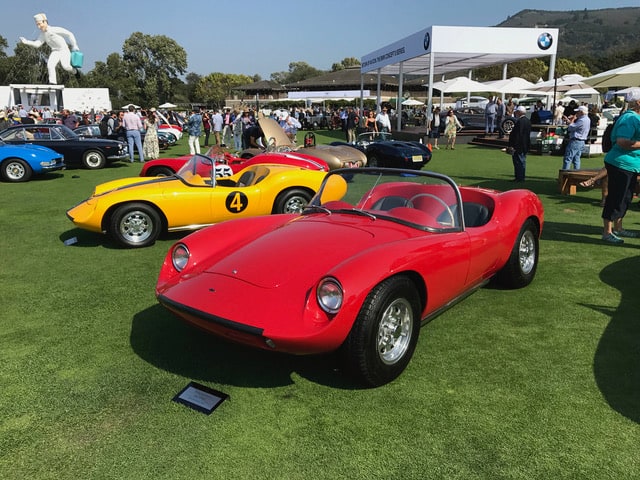
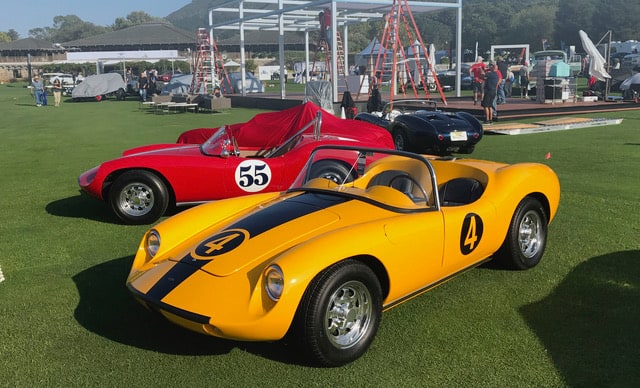
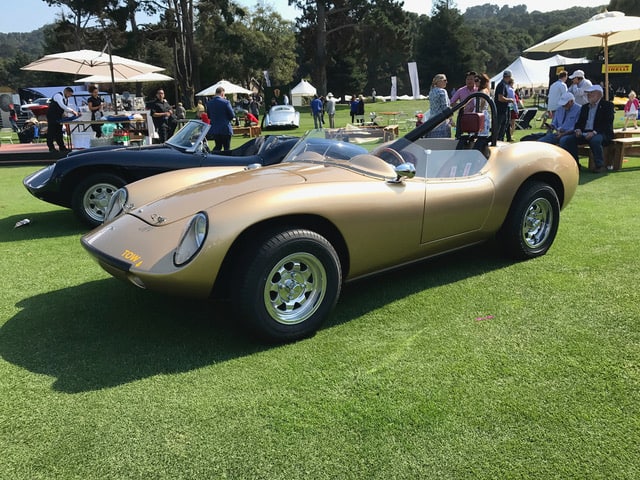
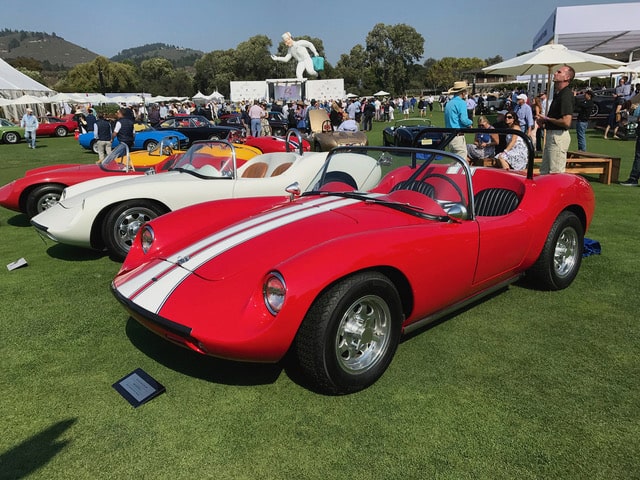
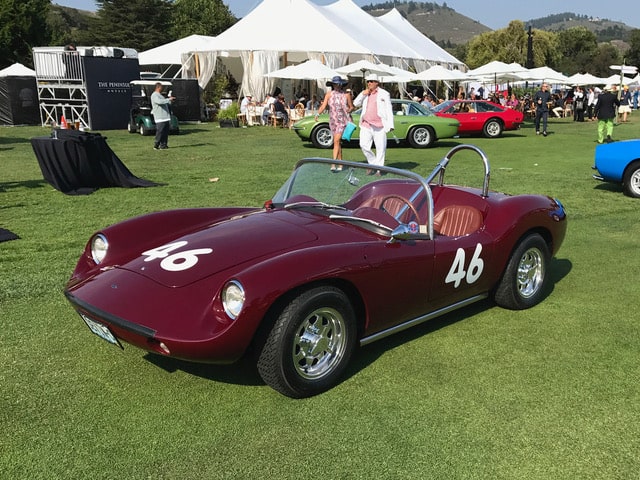


I’m Popa Bill Devins eldest son. I worked with him starting at 12 years old. At 21 I started working for Don Edmunds Autoresearch. We built (USAC champion most every year) sprint cars and midgets and a few Indy cars which were driven by Mario Andretti, Johnny Rutherford, Bobby Unser and many others, and an Evil Kanevel “Sky cycle”. Enjoyed your article – very accurate as journalism goes.